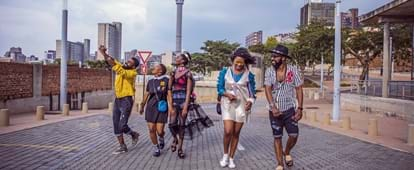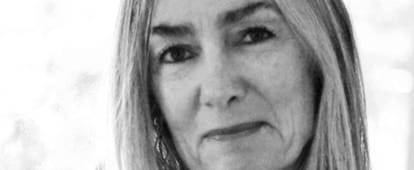By creating an account, I agree to the
Terms of service and Privacy policy
Choose your country and language:
Africa
Americas
Asia Pacific
Europe
JJohannesburg, the metropolis with the country’s tallest skyscrapers, was once just veld (bush), dotted with rocky outcrops, scrubby bush and a network of streams. Today it is a cosmopolitan city of more than four million people, one of the few of its size in the world that is not located on a river or at the sea. It is located in Gauteng, the smallest of the country’s nine provinces, which contributes around 40% to South Africa’s GDP.
Johannesburg has seen waves of different peoples occupying the area that is now the city: Stone Age ancestors dating back 500 000 years; Bushmen from 1 000 years ago; 500-year-old Iron Age furnaces belonging to Tswana people, and Boer farmhouses dating from the 1860s. But the city really started in 1886 when gold was discovered by Australian gold prospector George Harrison.
Soon tents and wagons appeared, to be replaced by wood and iron structures, and again replaced by brick buildings. A town was demarcated, and a large, bustling market square. Buildings got taller and taller, and today the city boasts one of the tallest buildings in Africa - the 50-storey Carlton Centre, built in 1973.
TThe gold rush saw prospectors from around the world trek up to the Witwatersrand, precipitating the Anglo-Boer or South African War of 1899-1902, in which the British fought the Boers over control of the then Transvaal and its gold.
After the war another wave of migrants entered Johannesburg - up to 60 000 Chinese labourers were imported to kick start the mines again, only to be repatriated six years later. But Chinese merchants had established themselves in the city, and still have a presence. The mines also brought European migrants to the burgeoning town. They provided the capital to reach deeper into the earth to get the gold, while black South Africans were recruited at low wages to mine the gold.
The first forced removals in the town in 1904 saw residents of Brickfields removed 25km down south after their brickmaking settlement in the town was burnt to the ground to contain a bubonic plague outbreak. They were settled in Klipspruit. This was the start of the city’s and the country’s largest township, Soweto. And so the segregated city was born.
Another migrant appeared on the dusty streets of the town - Mahatma Gandhi. He fought for equal treatment for Indian and Chinese residents, developing Satyagraha or passive resistance, adopted by the African National Congress at its formation in 1912. Like Nelson Mandela decades later, Gandhi was locked up in the Old Fort Prison in Hillbrow, the town’s first prison, both of them for the same reason: fighting for equal rights for their compatriots. The striking Constitutional Court now sits among three prisons: the Old Fort, the notorious No 4 black men’s prison, and the Women’s Gaol.

GGold was the backbone of Johannesburg’s rapid growth. In time, industries were established, and more and more people came seeking jobs and a slice of its wealth, especially after the 1913 Natives Land Act, which robbed black people of their land. Buildings soared upwards and suburbs stretched in all directions, today covering an area of some 1 700km². The Sachsenwald Forest that was planted in the first decade of the city’s life has today become an urban forest of 10 million trees.
One of these suburbs was Sophiatown. It witnessed the city’s second largest forced removal in the 1950s, when 65 000 people were removed by apartheid decree to make way for working-class whites. The suburb was the incubator of bountiful talent: writers like Nat Nakasa, Bloke Modisane and Don Mattera; and musicians Hugh Masekela, Dolly Rathebe, Dorothy Masuka and Thandi Klaasen. Artist Gerard Sekoto lived in the suburb for a while, recording life on the streets in vivid colours.
The city became the microcosm of the country’s fight against race discrimination. It was here that two giants of the anti-apartheid struggle, Mandela and Walter Sisulu, learnt the ropes of resistance. It was on a dusty soccer field in Kliptown in 1955 that the Freedom Charter was ratified, bringing together people from around the country to express their desires for an equal society.
The ANC was banned in 1960, and turned to armed struggle. On 11 July 1963 the top leadership of the ANC was arrested at a farm on the outskirts of Joburg, at Liliesleaf, hatching a plan for armed resistance. The farmhouse is now a World Heritage site, documenting in graphic detail the events of the day. Eight men were sentenced to life imprisonment for treason, among them Mandela and Sisulu. The resistance had been silenced.

IIt took Soweto schoolchildren on a winter’s day in Orlando in June 1976 to rise up against the apartheid government, to remind the world of apartheid’s brutal oppression. This catapulted Johannesburg and South Africa into the tumultuous 1980s, when apartheid was rapidly unwinding. Soweto was often the battleground of that demise - police chased protestors into the Regina Mundi Church, where you can still see the bullet holes in the ceiling and walls. Soweto has become a sprawling township of more than one million people. Its most famous road, Vilakazi Street, is where two Nobel laureates lived: Mandela and Archbishop Emeritus Desmond Tutu.
It was in Joburg that Mandela lived after his release from prison in 1990. He settled in Houghton with his third wife, Graça Machel, and it is here that he died. It is in Joburg that other great struggle stalwarts died and are buried: Sisulu and his wife Albertina, Ahmed Kathrada, Beyers Naude, Winnie Madikizela-Mandela, Joe Slovo, Helen Joseph, Lillian Ngoyi and many others.
Today Johannesburg still struggles to undo apartheid’s segregation, but the city hardly stops to take a breath, such is the drive of its residents to explore, make money, be better, have fun. Some of that fun happens in its many parks and green lungs; some of it dancing on top of its tall buildings, some of it in its many excellent restaurants, pubs and shebeens, usually with residents basking in its beautiful sunsets.
Johannesburg

AAbout the author
Lucille Davie has a BA Education degree, and a Tesol English 2nd Language Certificate. She taught for 20 years, and was a journalist for 19 years. For 13 years she wrote on the history and heritage of Johannesburg for the joburg.org.za website, and on a broad range of subject for mediclubsouthafrica.com. For three years she wrote a monthly column for the Saturday Star, entitled Jozi Rewired. A selection of all these articles is available on lucilledavie.co.za
In 2014 she wrote a book for Johannesburg City Parks & Zoo, entitled A Journey Through Johannesburg’s Parks, Cemeteries and Zoos. She now conducts Joburg tours, teaches English to expat children and adults, and writes about Jozi people and other Jozi stuff. Her interests include reading, writing, mountain biking, swimming, and travelling. She has completed 4 Dusi Canoe Marathons, ridden the Cape Argus Cycle Tour, and climbed Mt Kilimanjaro.
Related articles

